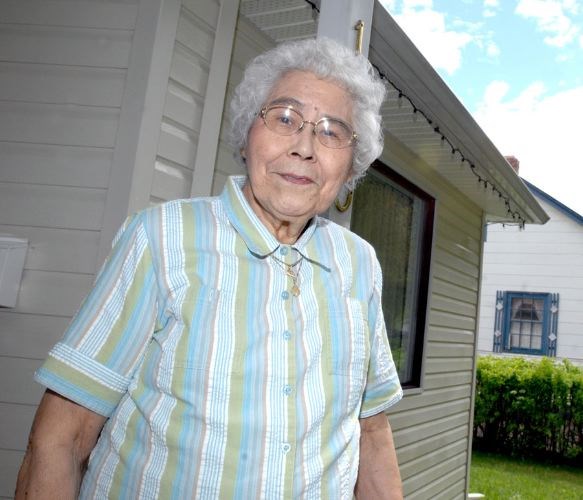Helen Anderson never doubted her own status as a First Nations woman.
It was in her blood as much as it was in her mirrored reflection.
But she had a heck of a time convincing the Canadian government.
The federal authorities created the problem in the first place when it became entrenched in the Indian Act that any aboriginal women who married a white man would lose her status. The Act was changed to address that injustice on April 17, 1985, and that set Anderson on the long path to regain her identity.
At the time, all she had to document her birth was a church certificate from the Catholic diocese in McLennan, Alta., where the bishop who baptized her in Hudson's Hope had filed the record shortly after her birth in 1923.
You had to prove your history and I went to the office and they asked me to fill out a form and I had no records and no way to get it, said Anderson.
For four years, every two weeks, Anderson visited the federal government office in downtown Prince George to find out if there was any new information to help speed the process of her application. To find out the names of her grandparents, she traveled with her sister to Moberly Lake, where they found an elder, Charlie Crying Man, who swore an affidavit in the Prince George Indian Affairs office that he knew them. But still the process stalled.
In 1995, on the advice of Ed John, a Prince George lawyer who lived close by, Anderson went to a Sunday breakfast meeting at the Coast Inn of the North attended by Prime Minister Kim Campbell and Tom Siddon, the Minister of Indian Affairs and Northern Development. Anderson met Siddon during a break and told him of her frustration trying to regain her aboriginal status.
They wanted information from three more elders, and I was 72 at the time, and I said to Mr. Siddon, 'I consider myself an elder. What am I supposed to do, dig them up?'
She handed Siddon her papers and six weeks after that meeting, Anderson received a letter from Ottawa confirming her status as a member of the West Moberly First Nations. Her persistence allowed her half-siblings and her three children to also gain their status cards.
As a direct result of her actions, her nephew, Roland Willson, is now chief of the West Moberly First Nation, while another nephew, Clarence Willson, is a band councillor.
Last Sunday, surrounded by friends and her large extended family at the Elder Citizens Recreation Association hall, Anderson celebrated her 90th birthday. She suffers from back pains, has arthritis in her hands and her hearing isn't what it used to be, but Anderson is well able to take care of herself and her mind remains sharp. Recent cancer surgery has given her a clean bill of health.
Anderson was born in Hudson's Hope and came to Prince George in 1942 at age 19 to begin a new life living in a city for the first time. The following year she started working as the live-in housekeeper for Dr. John McArthur and his wife Edith, who lived in a big house on Connaught Drive. For two years she lived there on a salary of $30 per month, $10 more than the going rate at the time.
Anderson remembers walking downtown over dirt roads and boardwalk sidewalks to one of two city theatres, along with a four-legged escort, Dopey, the family's German shepherd, who would wait for her in the doorway of the doctor's office.
She worked for the McArthurs for two years, then found work at a clothes cleaners. When that business amalgamated with another cleaning shop, Anderson lost her job. Unable to find work elsewhere, in the late 1940s she set up her own alteration business, Helen's Sewing Shop.
Believed to be the first aboriginal woman ever to establish a business in downtown Prince George, she operated the store for two years but found the work too much for one person.
I couldn't hire anybody and push them like I pushed myself, she said. I put in long hours and when Woodward's [department store] came in, I thought to heck with it. I applied there and that's where I ended up.
Having learned how to knit socks at age six she was hired as a seamstress at Woodward's, where her reputation for being able to handle any kind of clothing repair spread through the city.
I went in on a trial basis and came out 23 years later, so I got to know a lot of people, she said.
Anderson still lives in the small bungalow on Elm Street where she raised her children. It's right on the bus route and the drivers know her well enough to let her off right in front of her house. Her door is always open for her kids, her five grandchildren and her seven great-grandchildren when they drop by to visit her or to go to nearby Fort George Park.



